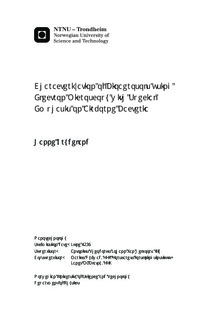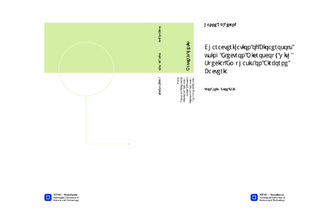| dc.description.abstract | Bioterrorist attacks on confined, indoor areas such as underground
subway stations by the release of pathogenic microorganisms into air,
could pose a threat to public safety. The potential threat may be
severe not only due to the adverse health effects themselves, but also
because of the lack of efficient and reliable on-site biological aerosol
(bioaerosol) monitoring systems. As of the present situation, possible
bioterrorist attacks on e.g. underground subway systems may remain
undiscovered until infected individuals seek medical assistance, which
may not happen before several days after the attack.
Knowledge about the morphology of bioaerosols, as they appear in air,
may be important in the development of fast and reliable bioaerosol de-
tectors. This study concentrates on providing such knowledge by inves-
tigating and comparing different methods of characterizing bioaerosols
by electron microscopy, using aerosolized, vegetative bacteria and bac-
terial spores as models. The study addresses challenges associated with
electron microscopy of bioaerosols, including dehydration artifacts and
identification of biological material in a complex, environmental sam-
ple. Bioaerosol sampling is also addressed.
The results of this study suggest that sampling, preservation and elec-
tron microscopy of bioaerosols is more challenging than the equivalent
for non-aerosolized biological material, owing to the complex compos-
ite nature of the bioaerosols, and the challenges associated with sam-
pling them. Experiments with energy-dispersive X-ray spectroscopy
(EDS/EDX) indicate that bioaerosols can be distinguished from inor-
ganic particles in environmental samples, provided that the bioaerosols
are not associated with inorganic material. Conventional scanning
electron microscopy (SEM) does not prevent bioaerosol dehydration,
and transmission electron microscopy (TEM) does not provide suffi-
cient information about the morphology of bioaerosols. Critical point
drying (CPD) is promising in some regards of bioaerosol preparation
for SEM, but preserving bioaerosol morphology as it is in air, however,
is also dependent on the particles not dehydrating during sampling.
Future studies are necessary to provide an optimalmethod of bioaerosol
characterization using electron microscopy. This work however, pro-
vides a comprehensive overview of the challenges faced in such regards,
and presents information which may propel research into bioaerosol
characterization and detection a small step forward. | |

